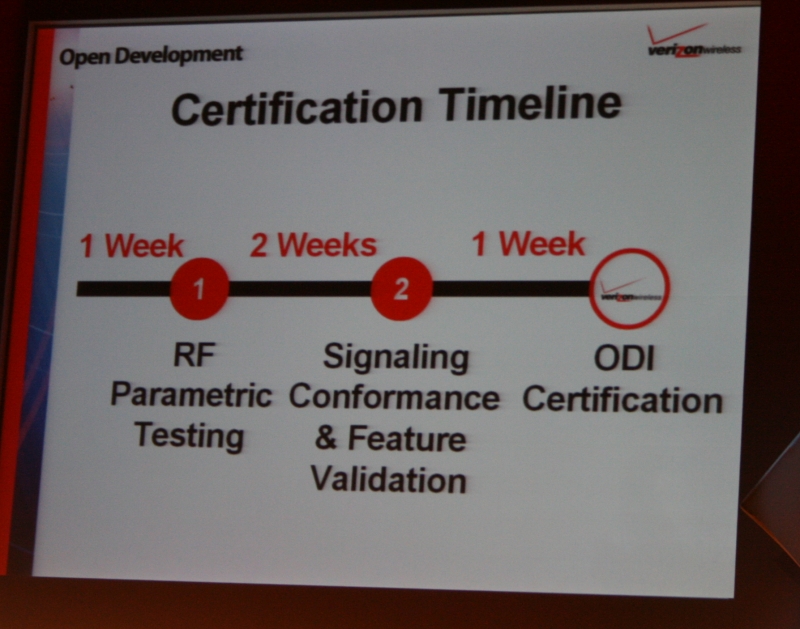This morning, Verizon Wireless held a conference for developers interested in Verizon’s “Any Device, Any App” initiative designed to open up network access to any device and software. Hit the Read More link for all of the details and screenshots of slides courtesy of Gizmodo.
The Verizon initiative to open up the network began with a November 2007 announcement that the wireless carrier would be spending $20 million on a new facility for testing of potential new devices utilizing Verizon’s network.
Today in New York, Verizon Wireless spelled out details specifying protocol support and device support, and while it is a step in the right direction for a company notorious for forcing a standard user interface to the detriment of usability and disabling features in handsets to maximize profits, it may have finally turned the corner regarding freedom of device customization.
The first slide above describes the workflow for devices approved for sale at retail such as in a Target or Circuit City. A device is purchased from a manufacturer that is approved by Verizon and all devices approved will be activated online only.
There is also a wholesale model where the manufacturer not only handles device approval, but also handles the network access end by providing voice and data access purchased from Verizon, negating the need for the buyer to deal with Verizon directly regarding device activation.
The next slide above shows the CTO of Verizon Wireless, who was also present at the event and confirmed that the same rules and specifications for Open Development would carry over to the carrier’s LTE network once the transition begins from CDMA2000, stating that the successful push to EVDO was instrumental in moving to LTE.
In an interesting statement, the CTO also mentioned that the core IP network that functions as the base of the current CDMA2000 1xEVDO Rev. A network would remain unchanged, and that the only change would be in the radios installed in new devices. He also stated that the carrier will also be more aggressive with promoting LTE once the network launches.
The next slides above describe all of the standards and requirements that both voice and data devices must conform to before being approved. There will be a fee for testing devices for final approval, and devices have to be tested every 36 months after initial approval.
There can also be combination voice/data devices, but all must feature support for E911, MEID, NAI, and other requirements spelled out by both the CDG and Verizon, but there will be no mandate on user interfaces, operating systems, and other systems typically handled by Verizon during development of devices.
The last two slides above demonstrate the timeline from certification to final approval.
While Verizon made much ado about devices being approved with an impressive four week turnaround time from first device submission to final approval, the reality is actually closer to eight weeks when factoring in infrastructure testing and field testing, with both procedures each adding two weeks to the process, as well as FCC approval which must happen before the device is submitted to Verizon.
At the beginning and the end of the conference, mention was made of the 700 Mhz auction, first in a slide that precluded Verizon from speaking about it directly per FCC rules, and at the end when Verizon CEO Ivan Seidenberg makes mention of it when talking about the potential for innovation.






